Normal
Also introduced from November 1957, it offered improvements such as descending windows and some bodywork improvements, making it more complete than the “Economy” version.
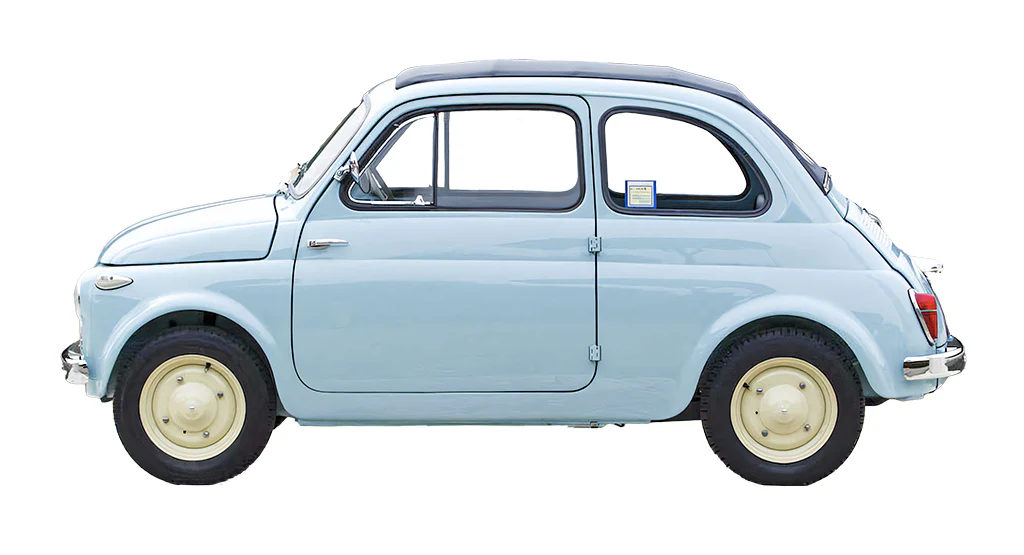
The Fiat 110, known as the Nuova 500, was produced from July 1957 to October 1960. This model has seen several evolutions in design and specifications over the years. The initial versions included “Economica” and “Normale” variants, with differences in glass and exterior trim. From June 1958, the “Sport” version was also introduced, featuring a sportier design with red side stripes and coloured wheel rims. Subsequently, the model was updated with new features and options, such as the sunroof and changes to the lighting.
Use this text to provide answers for your most commonly asked questions.
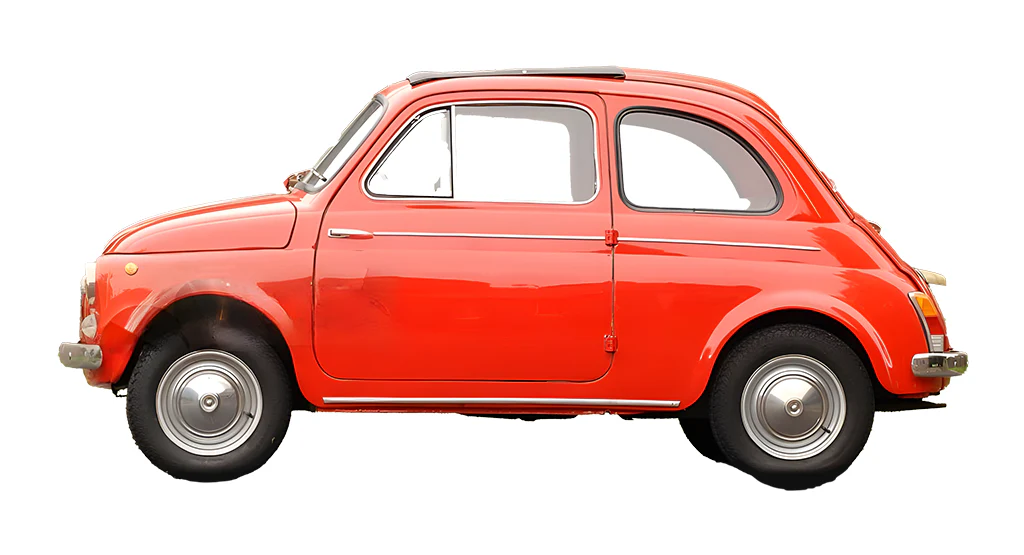
The Fiat 110, known as the Nuova 500, was produced from July 1957 to October 1960. This model underwent several evolutions during its life cycle, with significant updates in specifications and design. Initial versions included the “Economica” and the “Normale”, with obvious differences in details and exterior finishes. Later, the model saw the introduction of features such as the sunroof and new headlights.
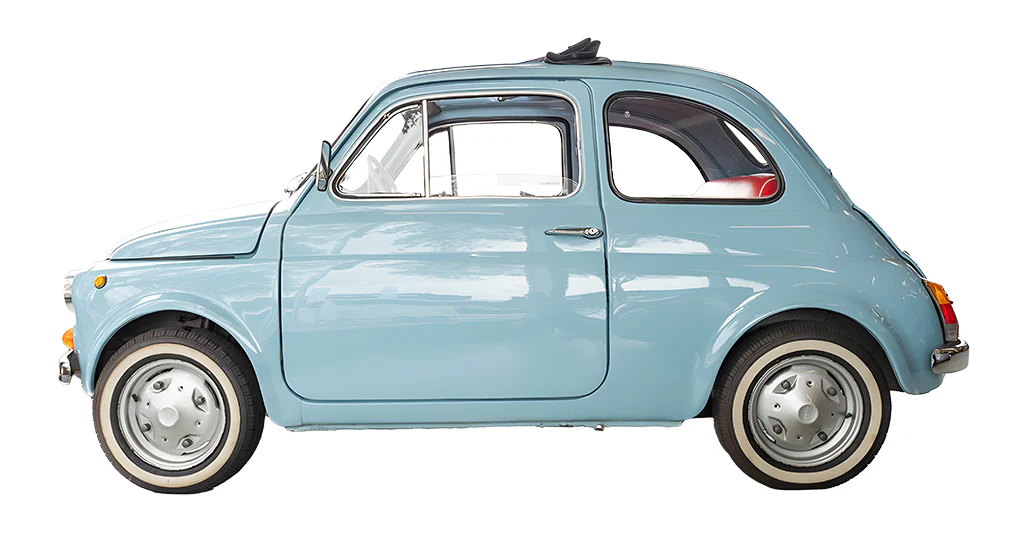
The “500 F” model was launched in March 1965 and represented a significant evolution compared to the previous “500 D”. During the first years of production, the 500 F retained some design details inherited from the D version, such as the bodywork and the details of the rear end. However, as time went by, the model began to define itself more and more clearly with unique characteristics, clearly distinguishing itself from the D version thanks to new aesthetic and functional modifications.
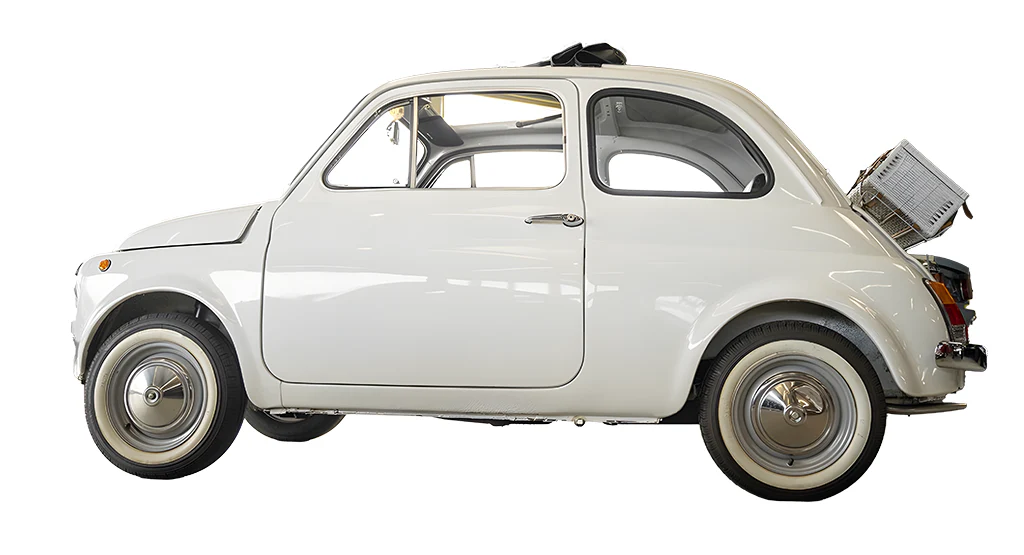
The “500 L” is the luxury version of the famous Turin city car, introduced in 1968 to offer greater comfort and refined details compared to the “500 F”. This model stands out for improvements such as carpeted floor mats, more refined interior finishes and reclining front seats, which increase driving comfort. The dashboard, in plastic with a modern design, features horizontal instruments similar to those of the FIAT 850, now with a fuel gauge, a novelty for the model.
On the outside, the bumpers were equipped with protective tubes that offered greater safety during parking maneuvers. The 500 L also included aesthetic improvements such as chrome moldings on the fenders and door handles, giving it a more elegant look. From September 1968 to November 1972, the 500 L underwent various body modifications, while maintaining its distinctive charm and image as a classy car.
Frame type: full metal body
Full load weight: 850 kg
Wheelbase: 1840 mm
Tracks: front, 1121 mm; rear, 1135 mm
Height: 1325 mm
Length: 2970 mm
Width: 1320 mm
Steering: screw and sector
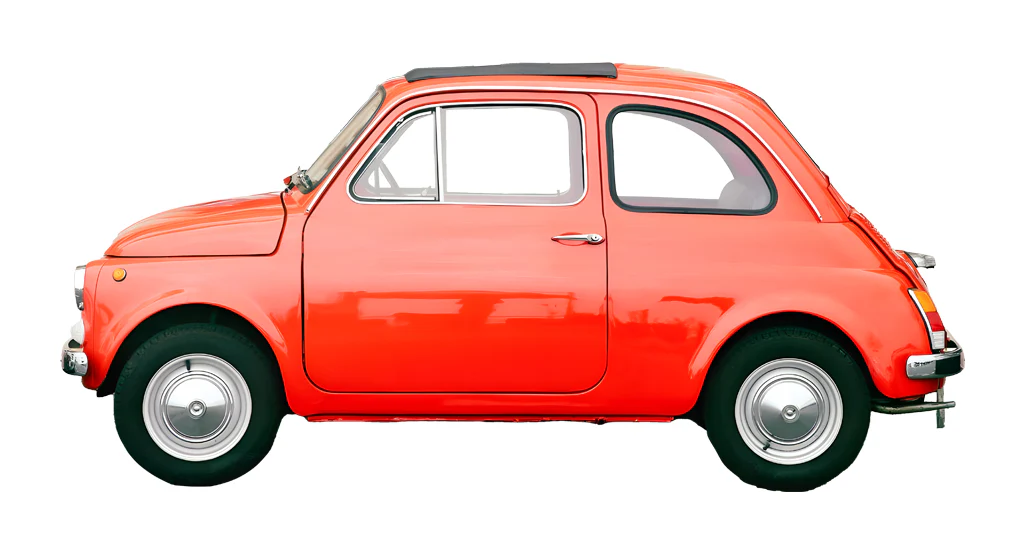
The “500 R” represents the last act of the legendary Turin city car, in production from November 1972 to August 1975. Known as the FIAT 110 F/II, this version returns to a more spartan style, eliminating the luxury finishes of the “500 L” both inside and out. The steering wheel and the instruments, now black, recall the design of the “500 F”, while the wheel rims are of the type used on the FIAT 126.
The 500 R engine saw an increase in displacement, going up to 594 cc. Among the available options was also the synchronized gearbox. Despite the simplification compared to previous models, the 500 R maintained its identity as an iconic car, closing the chapter of the series with a practical and functional model.

The FIAT 120 Nuova 500 Giardiniera was produced by Fiat from June 1960 to February 1968 and by Autobianchi from March 1968 to December 1977. The model is distinguished by its “flat” engine, designed to increase the cargo space. In the first Fiat versions, the fuel tank was flat like in the Nuova 500, while later it changed to a “cube” shape and finally a “barrel” shape, similar to the 500 F.
With Autobianchi, the front fascia was updated to reflect the design of the Bianchina and then that of the 500 L, with variations up to 1974. The side windows, initially sliding, were also replaced with single pieces that opened like a compass, and the side repeaters changed shape.
From November 1971 to January 1974, the Giardiniera adopted the vertical badge with the stylised Autobianchi “A”, while from February 1974 to December 1977, the badge took on the horizontal design of the 500 R.